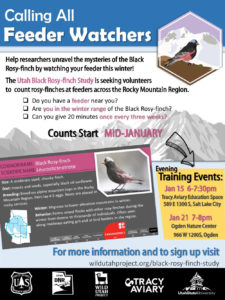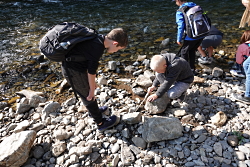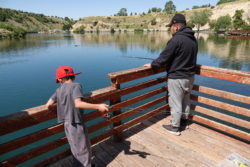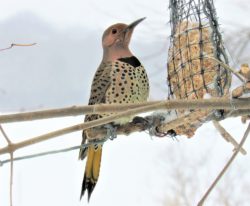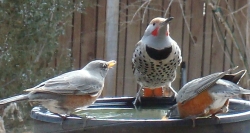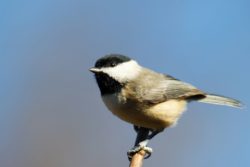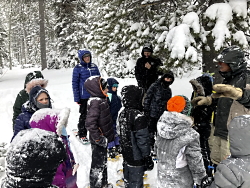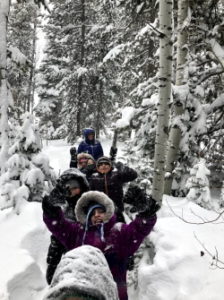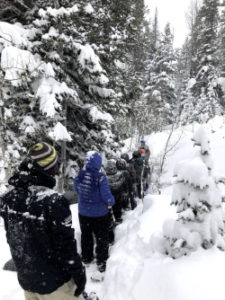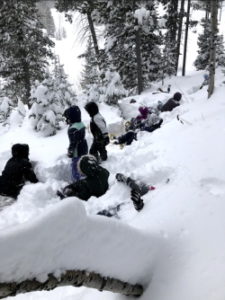Rosy Finches
Leucosticte tephrocotis
Courtesy & Copyright Jack Binch, Photographer
As recompense, I must give this beautiful finch its due and to repay you, dear listener!
I first met this beauty above 13,000’ on my way to Mt. Whitney’s summit in the Sierra Nevada range. It was a pleasant surprise as I wasn’t aware this species existed until locating it in a bird guide a few weeks later. I was within ten feet and they showed little concern with my proximity. Many years later I met them again during a Christmas bird count high on a ridge in the Bear River Range of N. Utah. A bird of the mountains, I surmised.

Leucosticte atrata
Courtesy & Copyright Jack Binch, Photographer
Researchers have conducted serious studies less than once per decade since 1925, when the first nests were recorded. Between then and 2002, three researchers had documented only 23 nests. This least-known, least-accessible bird of remote high country, may prove a bellwether for a retreating alpine ecosystem. Its mountaintop habitats are especially vulnerable to the effects of a warming climate. You may join this study by googling the “Wild Utah black rosy finch” project.
Like the Black Rosy, the Gray-crowned Rosy-Finches nest in crevices on cliffs and talus among glaciers and snowfields above timberline, mostly in Canada and Alaska. They glean wind-transported insects on snowfields and meadows, particularly at the edge of snow patches. Later in the season they capture insects from vegetation including flying insects, as well as continuing to feed on seeds. Winter foods are mostly seeds taken from the ground, from stalks protruding through the snow, and at high elevation bird feeders. In the non-breeding season, they sometimes occur in large, mixed flocks composed of other rosy-finch species, namely black and brown capped.
If you are fortunate enough to encounter this remarkable beauty, you will have a good day indeed, and if a black rosy finch, please report it to Janice Gardner at (801) eight-two-one 8569.
This is Jack Greene for Bridgerland Audubon, and I’m Wild about Utah!
Rosy Finches-Credits:
Images: Rosy Finches, Courtesy & Copyright © Jack Binch
Audio: Contains Audio Courtesy and Copyright Kevin Colver
Text: Jack Greene, Bridgerland Audubon Society and Utah State University, Sustainability
Rosy Finches-Additional Reading:
Gardner, Janice, Rosy Finch Study, Wild Utah Project, Fall/Winter 2019/2020, https://www.wildutahproject.org/black-rosy-finch-study
Strand, Holly, A Big Year in Utah, Wild About Utah, October 27, 2011, https://wildaboututah.org/a-big-year-in-utah/
Black Rosy-Finch Identification, All About Birds, Cornell Lab of Ornithology, Cornell University, https://www.allaboutbirds.org/guide/Black_Rosy-Finch/id
Grey-Crowned Rosy-Finch Identification, All About Birds, Cornell Lab of Ornithology, Cornell University, https://www.allaboutbirds.org/guide/Gray-crowned_Rosy-Finch/id

